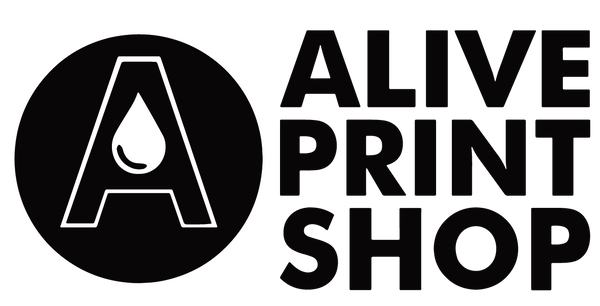Screen printing and heat transfer are two common methods for printing designs onto fabric. While both methods can produce excellent results, they have some distinct differences that can make them better suited for different types of projects. In this article, we’ll explore the differences between the two methods and discuss the pros and cons of each.
What Is the Screen Printing Process?
The screen printing process begins with a stencil applied to a mesh screen. A squeegee forces ink through the stencil and onto the material. The ink is then cured by heat or ultraviolet light to create a permanent impression. The stencil is then stripped away, and the printed material is ready to be used.
What Are the Pros and Cons of Screen Printing?
While the process has advantages, some potential drawbacks should be considered before committing to a screen printing project. Below, we discuss the pros and cons of screen printing.
The Pros of Screen Printing
One of the major advantages of screen printing is its versatility. The process can be used on various surfaces, including paper, fabric, plastic, and metal. This makes it an ideal choice for printing on a range of products. Additionally, screen printing is capable of producing high-quality, detailed images that are durable and long-lasting. The process is also relatively cost-effective, especially when printing in bulk.
The Cons of Screen Printing
One of the drawbacks of screen printing is that it is a relatively slow process. Each color in a design must be applied separately and then allowed to dry before the next color can be applied. This means that large or complex designs can take significant time to complete. Additionally, screen printing typically requires specialized equipment, which can be expensive to purchase or rent. Finally, the process can be messy and require hazardous chemicals, making it important to take safety precautions when working with screen printing materials.
What Is the Heat Transfer Process?
The process begins with a special ink or pigment printed onto a transfer paper. This paper is then placed onto the surface that is to be decorated. Heat and pressure are then applied to the transfer paper, which melts the ink and bonds it to the surface. This process is sometimes called thermal printing, heat transfer printing, or sublimation printing.
What Are the Pros and Cons of Heat Transfer?
Heat transfer printing is a versatile, cost-effective process that can be used to produce a wide variety of products. However, there are both pros and cons associated with this printing method. Below, we explore the pros and cons of heat transfer printing.
The Pros of Heat Transfer
One of the biggest advantages of heat transfer printing is that it is quick and easy. It can be done quickly and doesn’t require a large setup or expensive equipment. Heat transfer printing is also very cost-effective. It is much cheaper than screen printing, and the materials needed are relatively inexpensive. Heat transfer printing is also very versatile. It can be used on various fabrics, including cotton, polyester, nylon, and more. The prints are also durable and can last for a long time.
The Cons of Heat Transfer
One of the biggest drawbacks of heat transfer printing is that it is less precise than other printing methods. The prints can appear blurry or pixelated, and the colors may need to be more vivid. Heat transfer printing also produces a raised texture on the fabric, which can be uncomfortable to wear. The prints can also crack or fade due to wear and tear. Additionally, heat transfer printing can be difficult to remove from fabrics, so it is not recommended for items that will be washed frequently.
Conclusion
There are pros and cons to both screen printing and heat transfer. Screen printing gives you more control over the design, and the process is generally cheaper. However, heat transfer provides a higher-quality print that is more durable. Ultimately, the best method for you depends on your budget and needs.
If you are seeking screen printing in Las Vegas, you can contact us at Alive Print Shop. Aside from screen printing, we also offer embroidery for custom apparel for all your needs. Get in touch with us to learn more about our screen printing process.
 (702) 800-2932
(702) 800-2932 info@aliveprintshop.com
info@aliveprintshop.com Las Vegas, NV
Las Vegas, NV
 Quality Assured • Satisfaction Guaranteed
Quality Assured • Satisfaction Guaranteed










